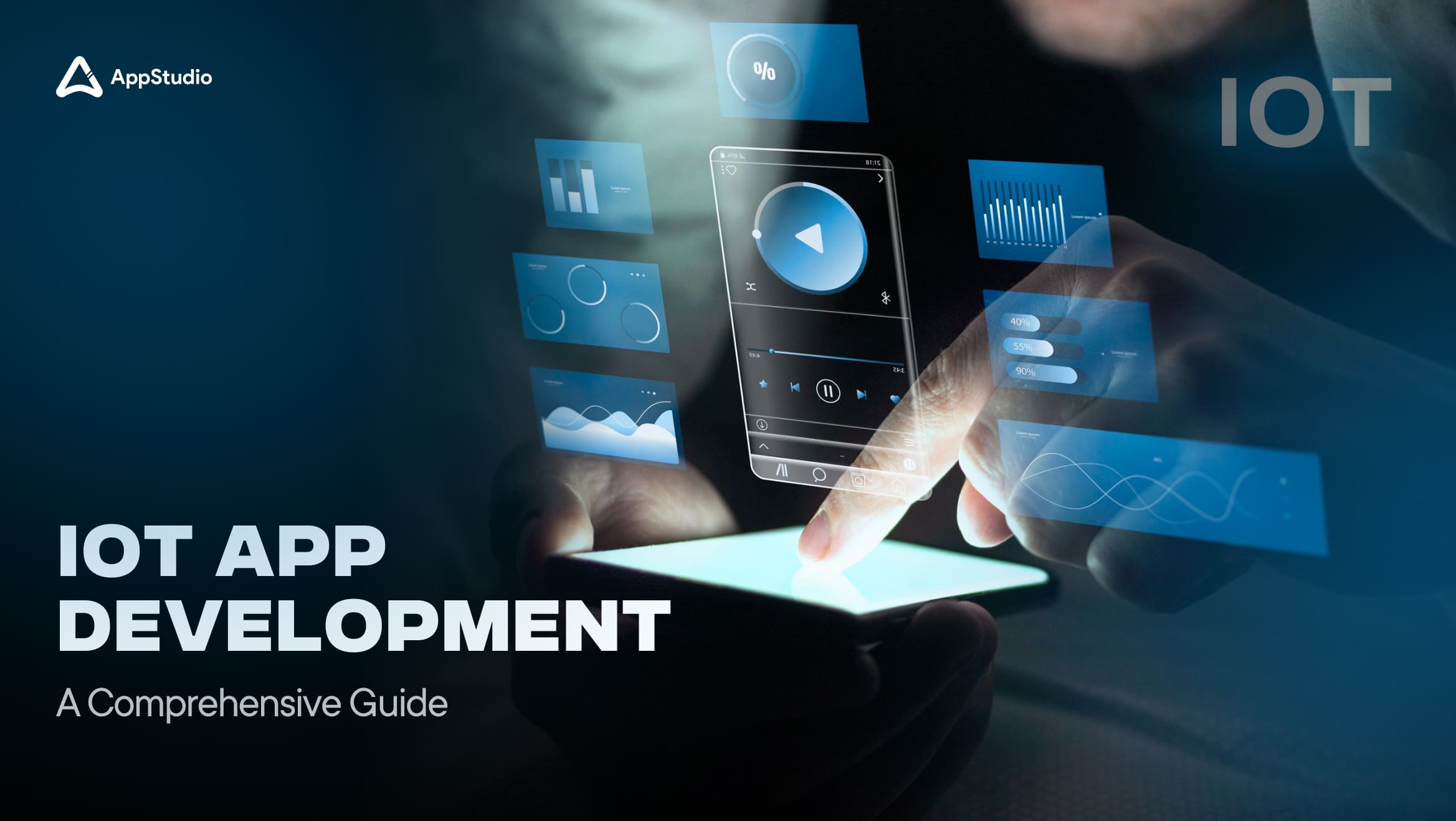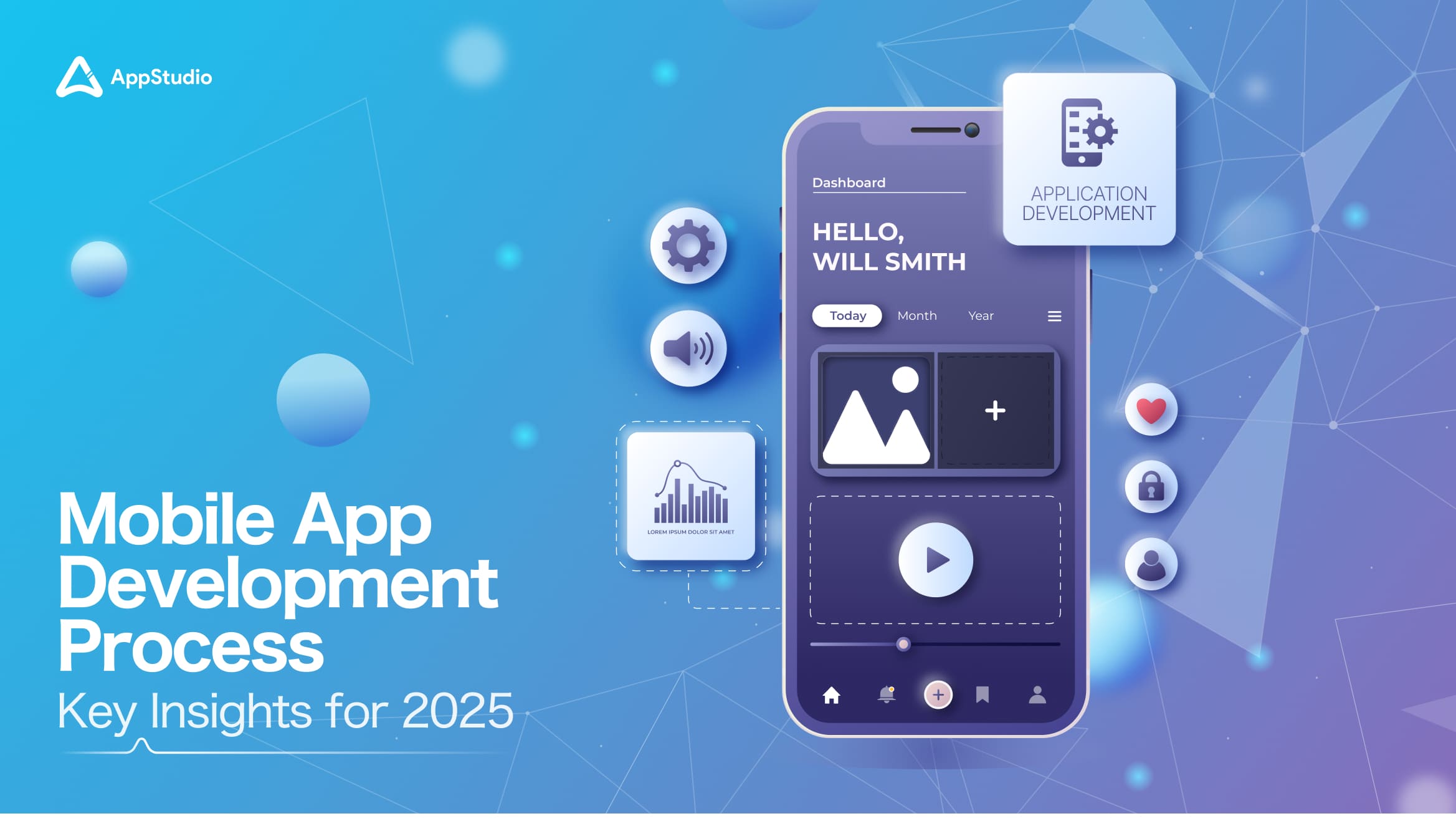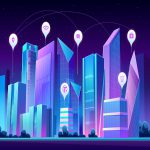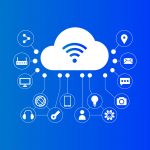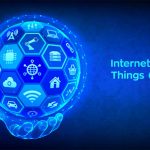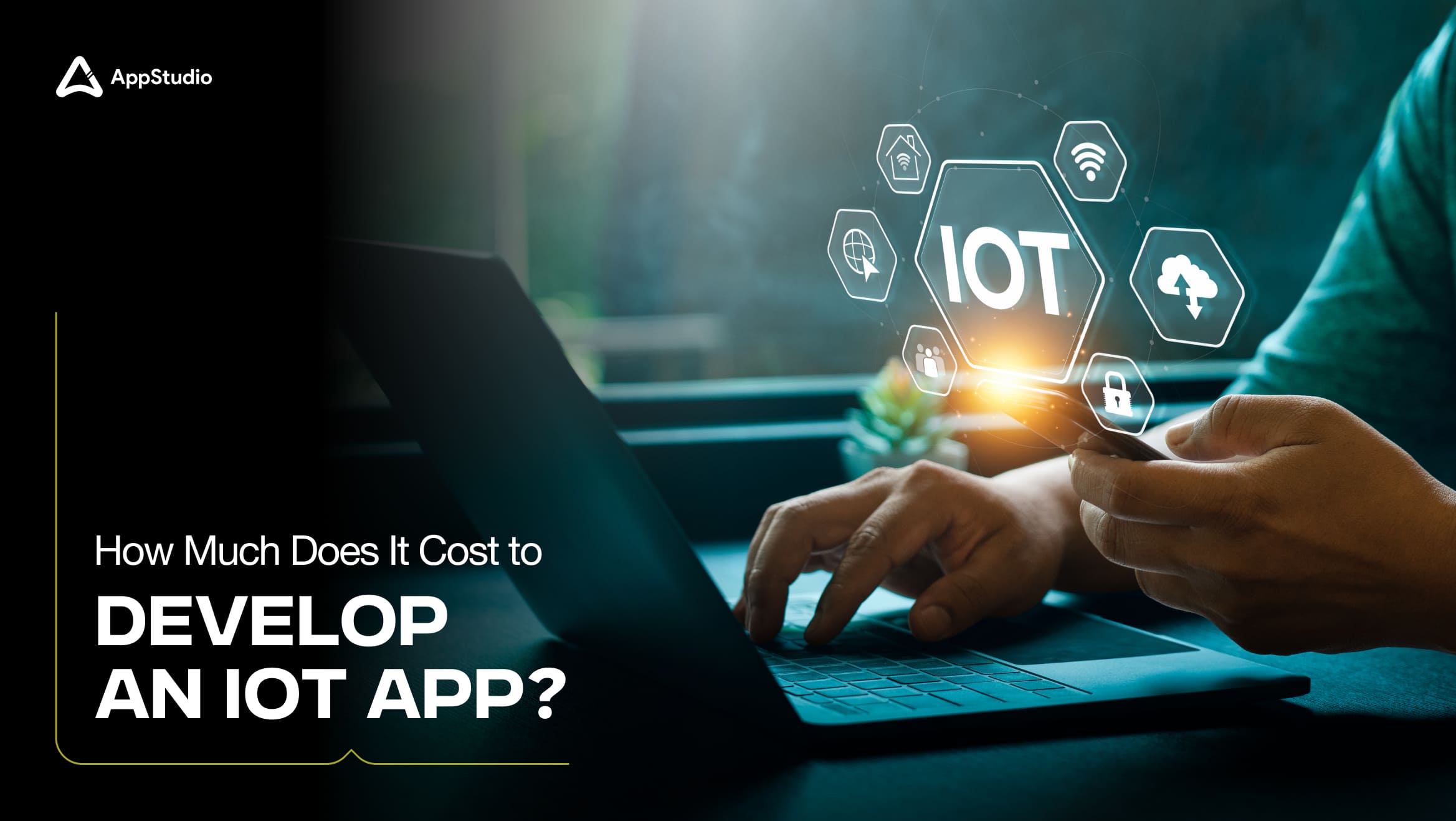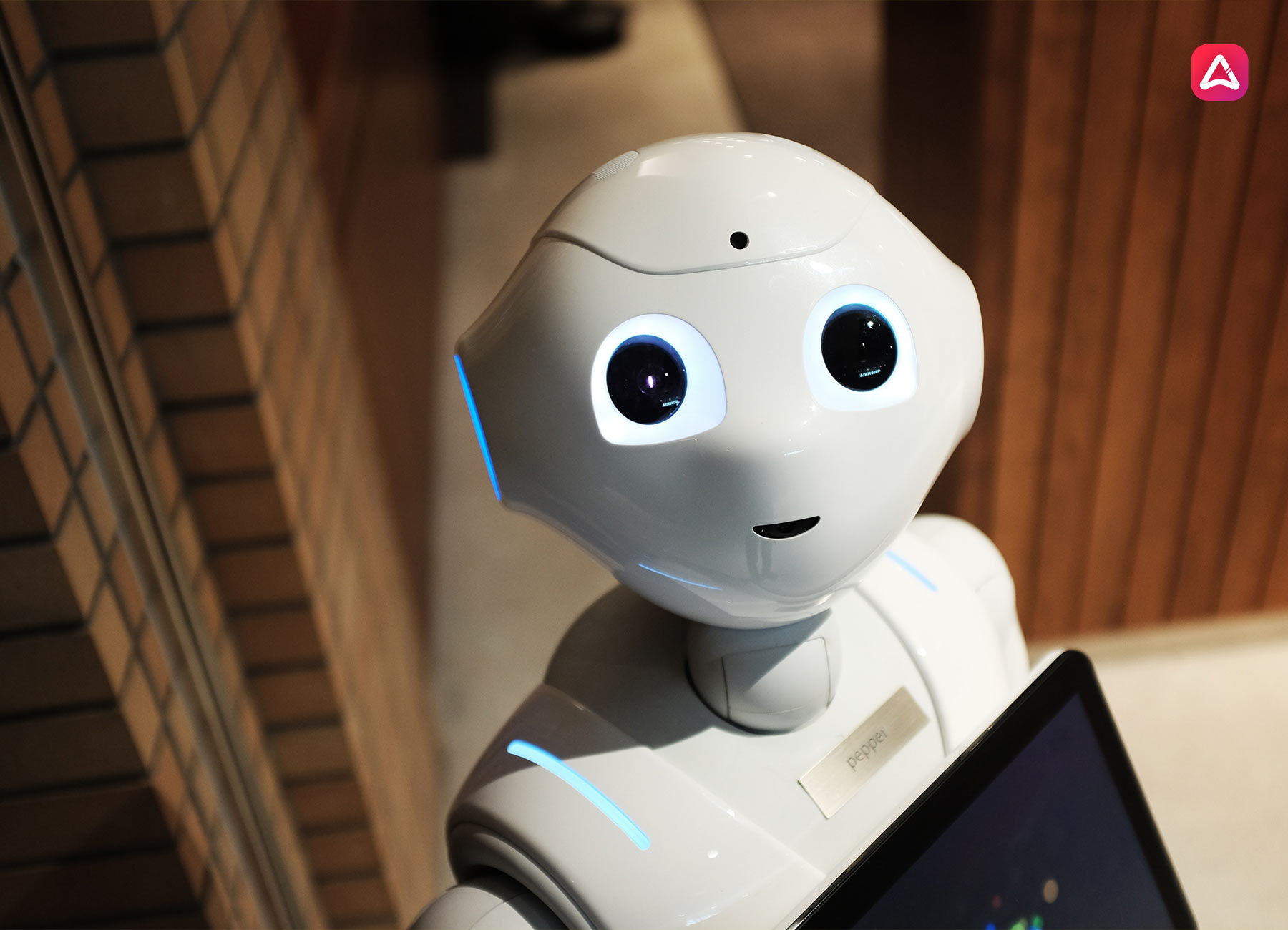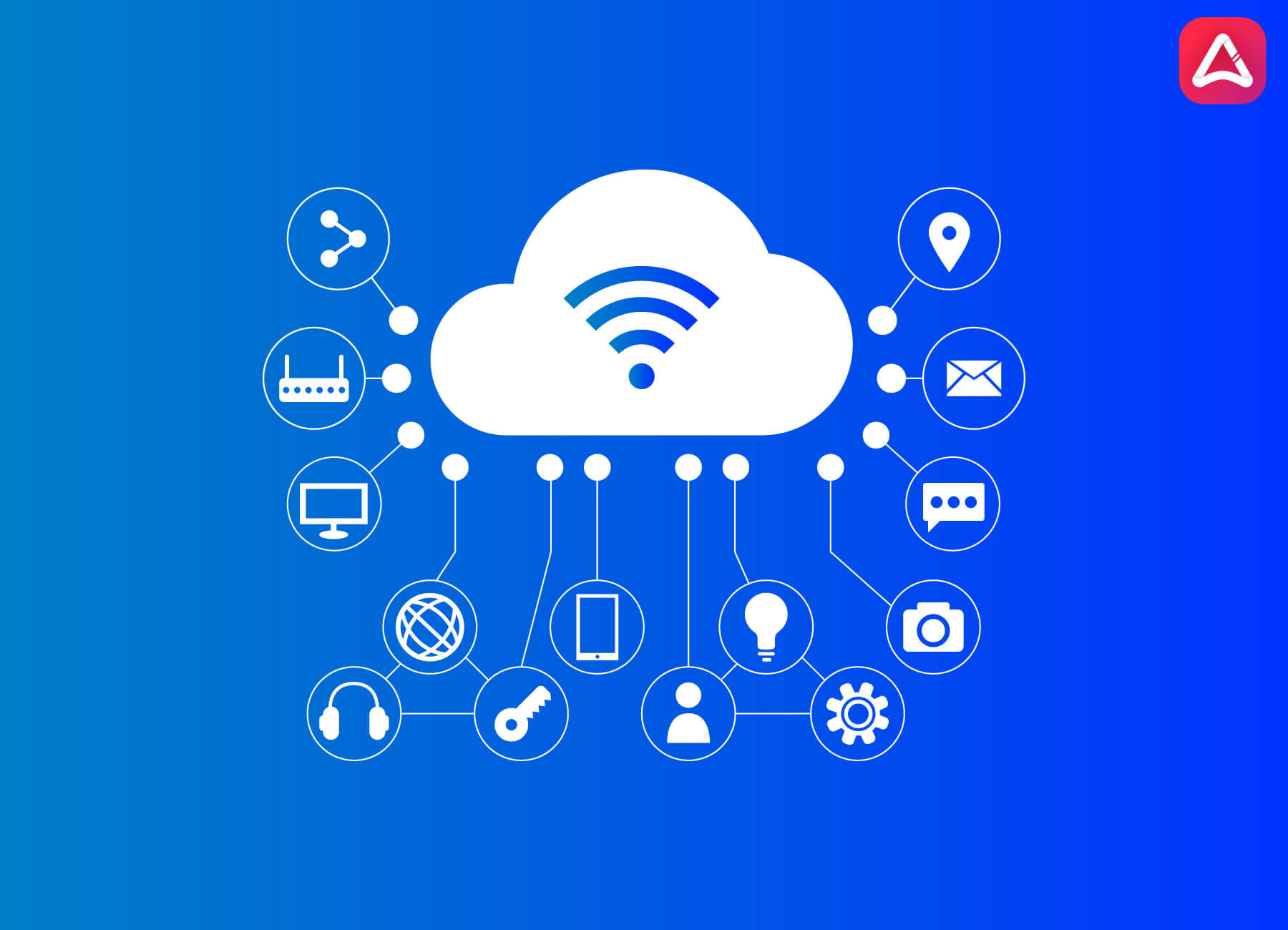As we near the end of 2024, one tech trend that has not only persisted but skyrocketed in demand is IoT app development. With the world shifting rapidly toward full automation, IoT applications are taking center stage—powering everything from smartwatches and connected homes to industries and infrastructure. IoT has indeed made its way into our lives and even into our hearts!
According to recent statistics, the Internet of Things (IoT) industry is expected to be valued at approximately $390 billion in 2024, with projections indicating it will surpass $741 billion by 2030. This remarkable growth suggests that the number of IoT-connected devices will triple over the next decade.
In this blog, we’ll dive into everything you need to know about Internet of Things application development—an essential area for any business aiming to stay competitive and responsive to market demands. Whether you’re looking to dive into mobile app development for IoT or create an IoT-enabled web application but find the process daunting, we’re here to help.
As IoT app development services experts, we can simplify the process and turn your ideas into reality. Ready to get started? Keep reading, take notes, and let’s explore the world of IoT application development together!
Role of IoT App Development in Business
IoT app development is transforming the way businesses function by building networks of connected devices and systems. These applications empower organizations to gather and analyze real-time data, delivering insights across all areas of their operations. Whether it’s streamlining production lines or enhancing customer interactions, custom IoT app development ensures that businesses have continuous access to data, allowing for more innovative, data-driven decisions.
As we noted in the introduction, more industries are recognizing the benefits of connected devices, driving up the demand for IoT app development solutions and making them a crucial element of any business strategy today.
Related reading: what is an IoT Platform? How is IoT used in the Business?
Impact of Internet of Things App Development in Business Operations
The influence of IoT app development on business operations is both broad and transformative. IoT applications streamline processes by automating tasks and providing real-time data insights, which significantly boosts operational efficiency. With IoT-driven predictive analytics, businesses can anticipate trends, reduce downtime, and prevent equipment malfunctions. This automation helps optimize resources and cut down operational costs, enabling businesses to stay agile and competitive.
IoT’s benefits go well beyond internal processes; it’s reshaping customer experiences too. Companies can deliver personalized, responsive services that cater to real-time customer needs through custom IoT app development. A great example is the proliferation of smart home devices, which allow users to control their homes through voice or mobile apps. This convenience and level of customization build stronger customer loyalty.
IoT is also accelerating innovation, unlocking new possibilities for businesses. From healthcare app wearables to self-driving cars, IoT mobile app development empowers companies to develop products and services that once seemed futuristic. Investing in IoT technology places businesses at the forefront of this digital evolution. As industries continue to digitize and automate, those leveraging IoT effectively will drive the next wave of innovation, maintaining a competitive edge in an increasingly interconnected world.
How Does IoT Mobile App Development Work?
An IoT app empowers users to seamlessly control and monitor IoT devices, providing an intuitive interface to manage connected technology. You can develop both mobile and web IoT apps depending on your specific requirements. These apps form a crucial part of the IoT ecosystem, working alongside cloud services and the IoT device itself. The Internet of Things application development serves as the main interface between the user and the connected device.
With that clarified, let’s explore how the IoT app development process works.
As mentioned earlier, an IoT app is an integral component of the IoT system, allowing users to manage and control connected devices. In the standard four-layer IoT architecture, it falls in the application layer, playing a vital role in the system’s overall functioning.
Whether you’re looking into IoT for mobile app development or custom IoT app development, don’t hesitate to contact the experts at Appstudio for guidance and innovative solutions.
At first glance, this diagram may appear complex, but the process is relatively easy. The IoT device, or perception layer, is equipped with sensors and embedded software development that enable it to communicate and share data with the app and other systems.
The data travels through the network layer to the middleware layer, which involves cloud services and databases. Here, the data is stored and processed before being sent to the app. The process is bidirectional – both the IoT device and the app can send and receive data through the middleware and network layers.
Now, let’s look at the key components of Internet of Things app development.
Related reading: How to Leverage AI in IoT App Development for Smarter Automation
Understanding the Components of Internet of Things App Development
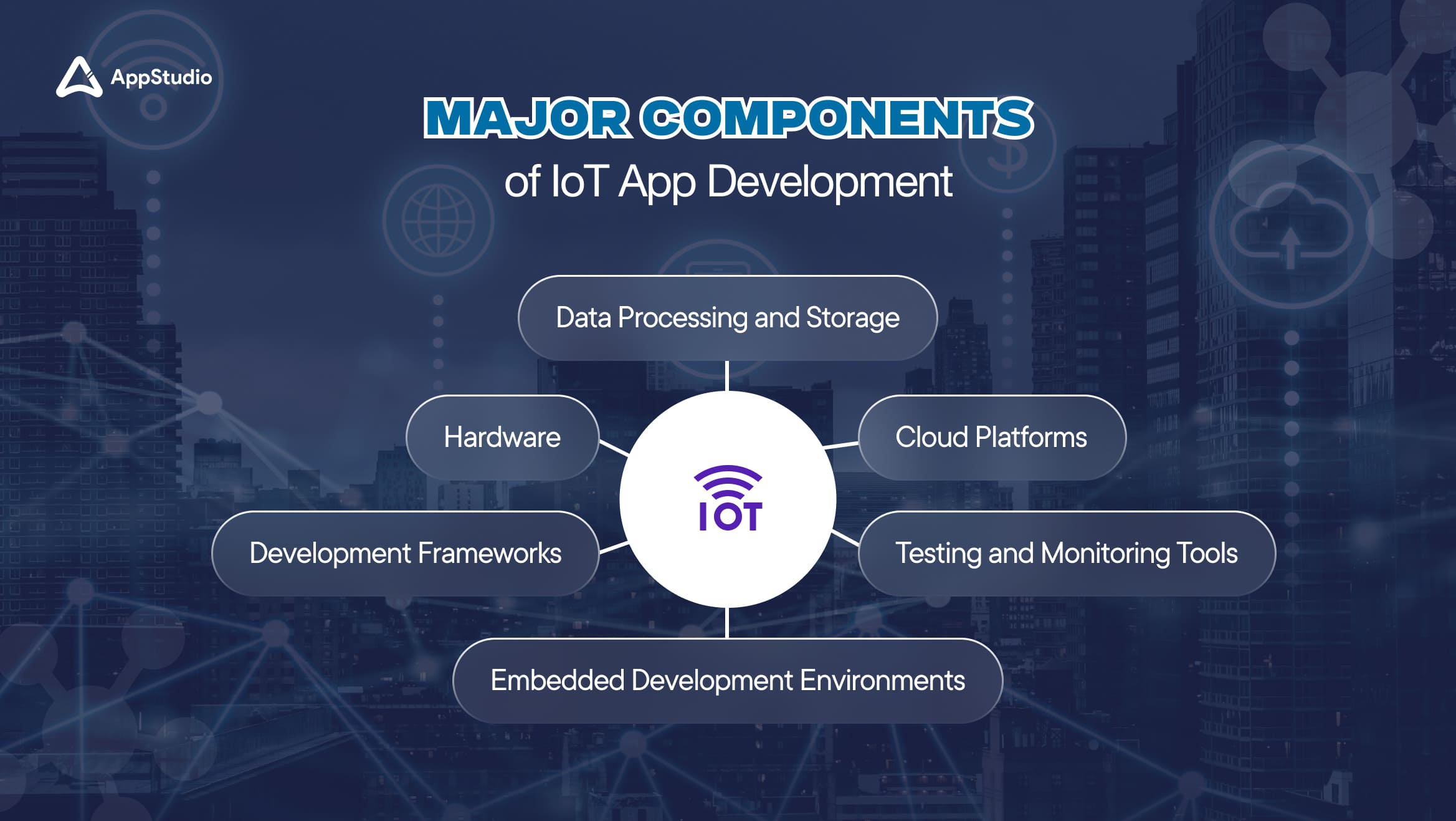
Hardware
Choosing the right hardware is key to building IoT apps. Arduino boards are popular for beginners and prototyping because they’re easy to use and have strong community support. On the other hand, Raspberry Pi is more powerful and is often used in advanced IoT projects that require edge computing, like machine learning or image processing.
Embedded Development Environments
Embedded development environments are crucial for building and running Internet of Things apps on hardware. PlatformIO is an open-source tool that helps developers work with different hardware platforms, supporting many boards and frameworks. On the other hand, Keil MDK is a well-regarded environment explicitly designed for ARM-based microcontrollers, often used in IoT devices.
Cloud Platforms
Cloud platforms are crucial for Internet of Things application development as they provide a scalable and secure infrastructure for managing devices, data analytics, and storage. Microsoft Azure IoT offers comprehensive cloud services for data analysis, remote device monitoring, and integration with Azure services. IBM Watson IoT is another popular platform that provides managed device and data management services, analytics, and machine learning features. AWS IoT Core provides a framework for message brokering, secure device connectivity, and seamless integration with other AWS services.
Data Processing and Storage
IoT applications generate vast amounts of data from connected devices, and efficient data processing and storage solutions are crucial for extracting insights and making informed decisions. NoSQL databases like MongoDB are well-suited for handling the diverse types of data produced by IoT devices, such as user interactions, device metadata, and sensor readings. On the other hand, Apache Kafka is a distributed streaming platform that enables real-time data processing and analysis.
Development Frameworks
Development frameworks are key to promoting code reuse and speeding up the creation of Internet of Things applications. Node-RED is a flow-based development tool that simplifies connecting IoT devices and APIs, thanks to its support for visual programming. On the other hand, Eclipse IoT is a collection of open-source frameworks and technologies that provide a more comprehensive approach to building IoT applications.
Testing and Monitoring Tools
Ensuring the reliability and performance of Internet of Things applications requires effective testing and monitoring tools. These tools help developers identify issues like memory leaks, performance problems, and other factors that could impact the user experience. Postman is a popular tool for testing APIs, ensuring smooth communication between IoT devices and the cloud. It provides a user-friendly interface for creating and executing API calls, allowing developers to quickly test and validate APIs in their IoT applications.
5 Stages of IoT App Development
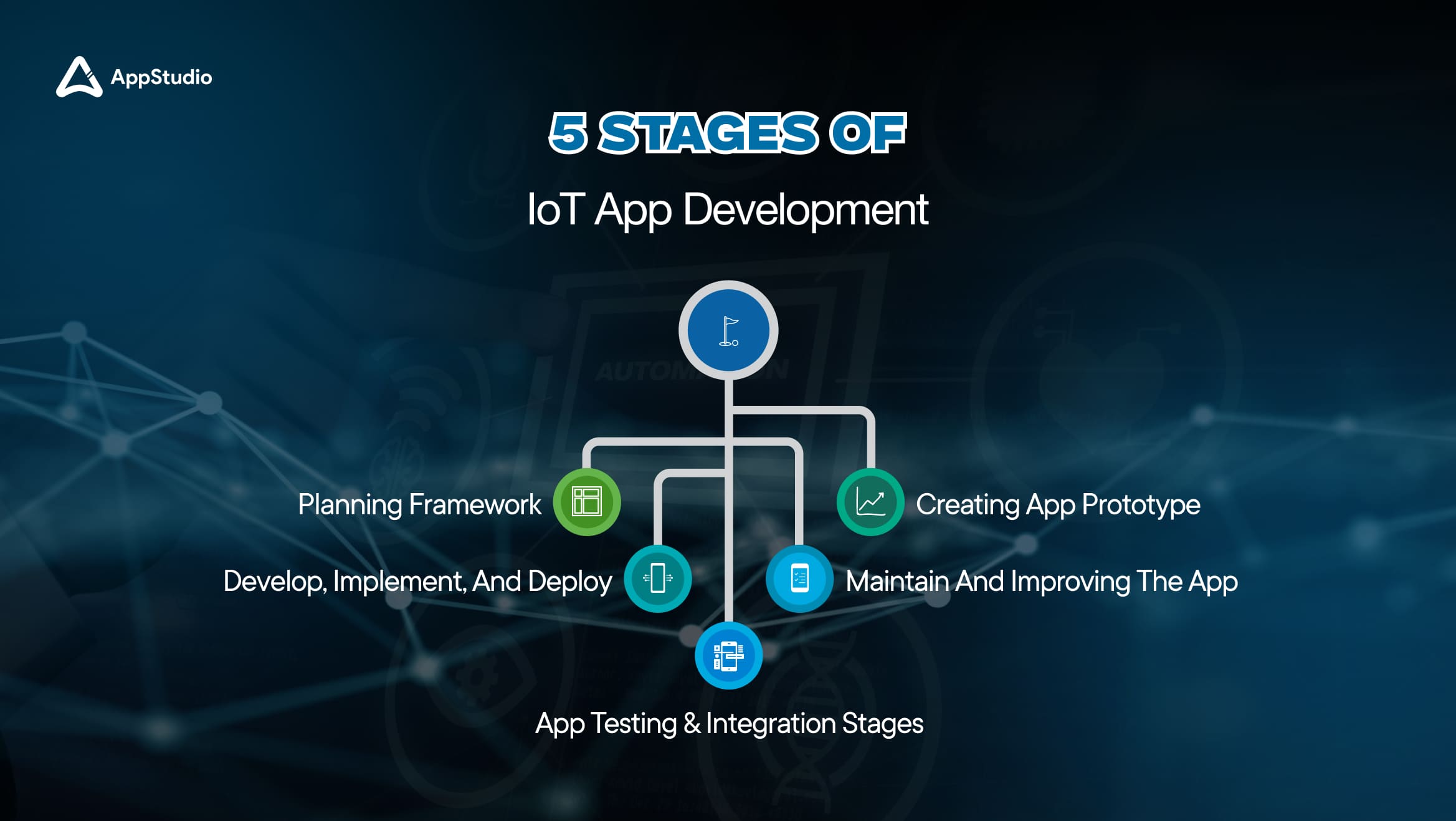
Plan the Framework of Your App
When building an IoT application, the first step is to determine the best delivery strategy: developing from scratch, using SaaS platforms, or exploring other options. The framework serves as the “backbone” of your IoT app, helping you understand the project’s technical specifications, budget, and timeline. At this stage, it’s important to plan the data and network protocols, cloud architecture, scalability, and open API development support for your app. To ensure the reliability and security of your IoT application, consider the requirements for IoT device development, hardware support, firmware updates, and security protocols in your app development IoT process.
Create the IoT App Prototype
Prototyping and wireframing are proven techniques in IoT that help ensure your project stays relevant, stays within budget, and includes all the necessary features. Developing IoT app prototypes is an excellent starting point for several reasons. During this phase, you’ll explore various wired and wireless technical options to solve specific problems and establish seamless connections with IoT devices. Some options to consider include KNX systems and the Zigbee protocol, which is commonly used in IoT app development to optimize connectivity and functionality.
Develop, Implement, and Deploy the IoT Application
To build a reliable IoT application that optimizes the performance of your hardware, it must be grounded in the prototype and project documentation. Focus on the backend code architecture and the UX/UI design of the IoT app development. These steps ensure that your software is user-friendly and bug-free and delivers your customers a top-tier UI/UX experience. Once this is accomplished, you’ll be ready to launch your IoT applications confidently.
App Testing & Integration Stages
As IoT apps become more feature-rich and complex, quality assurance (QA) becomes crucial to the development process. QA helps identify and resolve various issues while also providing opportunities to add more features that enhance your app’s functionality. In IoT quality assurance, five key types of testing are used: scalability, compatibility, security, performance, and usability, each ensuring that your IoT application operates seamlessly across all scenarios and platforms.
Maintain and Improve the Application
It’s crucial to update and continuously improve your IoT app after its launch. To stay ahead in the IoT software market, actively manage consumer feedback and use it to enhance your app’s functionality. Additionally, regularly review and update the firmware of IoT devices to ensure they remain secure and up-to-date. This ongoing maintenance will help your app stay relevant and reliable over time.
Industries Using the IoT Application
IoT spans a broad range of industries, helping businesses automate processes to boost efficiency, reduce costs, and save time.
- Transportation: IoT sensors and devices help monitor fuel consumption, vehicle performance, and traffic flow. This contributes to less congestion, improved safety, and reduced environmental impact.
- Smart Homes: IoT technology enables the management of entertainment, security, lighting, and temperature in homes, offering greater convenience and control.
- Supply Chain and Manufacturing: IoT enhances supply chain management, improves manufacturing processes, and allows real-time equipment monitoring, reducing downtime and improving overall efficiency.
- Healthcare: IoT devices, such as smart wearables, electronic health records, and remote monitoring tools, track patient health, detect potential issues, and enhance healthcare delivery.
- Retail: IoT enhances customer experience, streamlines operations, and optimizes supply chain management. Features like targeted marketing, smart shelves, and automated checkouts improve efficiency and customer satisfaction.
Related reading: Guide to Industrial IoT Solutions and Their Impact
Top 5 Trends in IoT App Development
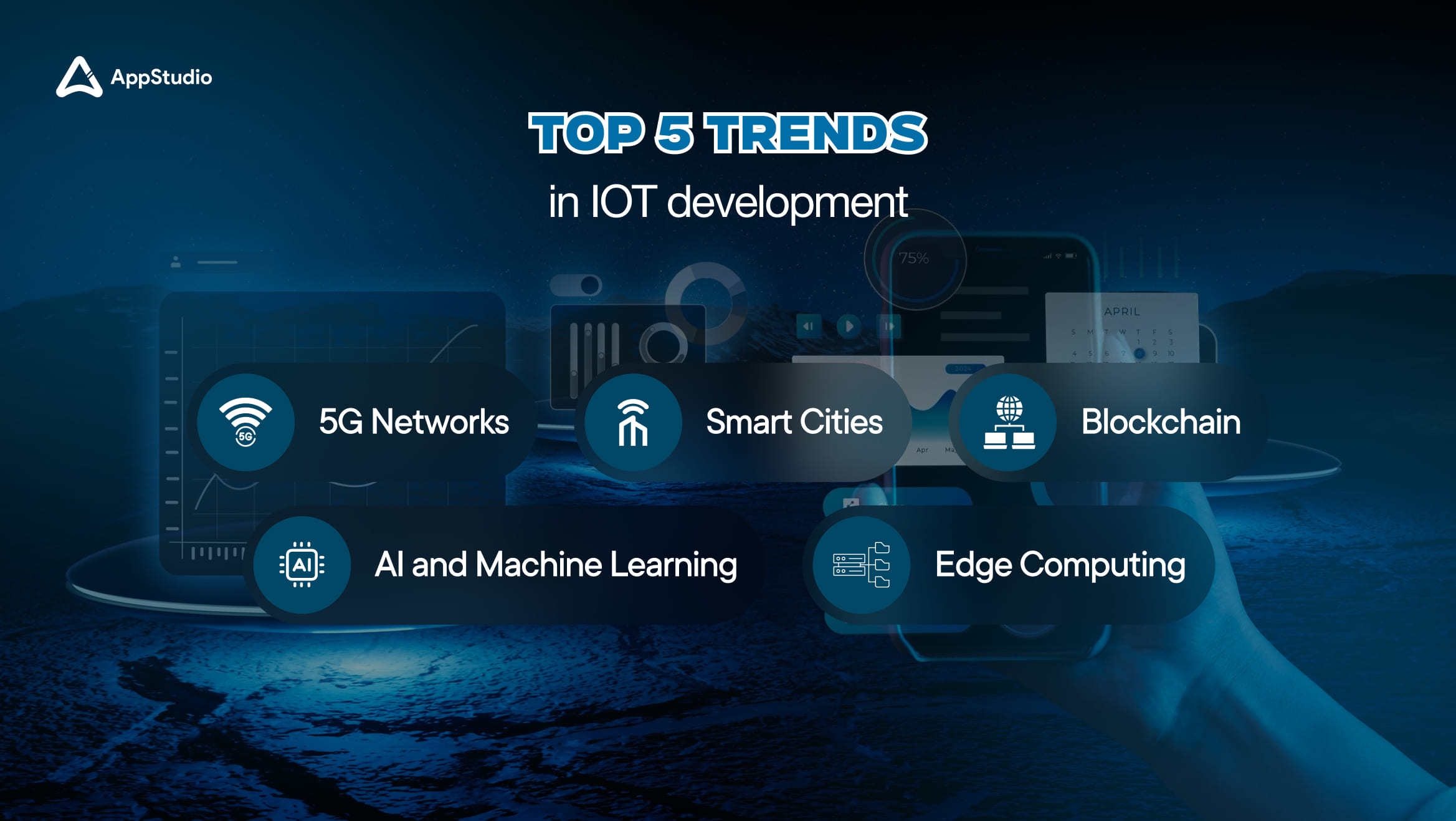
- AI and Machine Learning: Data science is driving the growth of AI and machine learning, enabling machines and sensors to analyze data autonomously in real time. This leads to smarter decision-making, improved productivity, and reduced operational costs.
- Smart Cities: IoT is playing a key role in building smart cities, where sensors and electronics optimize traffic management, energy consumption, and public services. This not only improves the environmental footprint of urban areas but also enhances the quality of life for residents.
- Blockchain: Blockchain technology facilitates secure, autonomous communication between mobile devices, hardware, and sensors. Beyond providing a transparent and tamper-proof system, blockchain is essential for safeguarding data and securing transactions.
- Edge Computing: Edge computing allows faster data processing and analysis at the source, minimizing delays and network congestion and ultimately enhancing operational efficiency and performance.
- 5G Networks: With faster and more reliable connectivity, 5G is revolutionizing IoT by enabling complex applications like remote surgeries and self-driving cars, pushing the boundaries of what’s possible in real-time communication and automation.
Challenges in Building an IoT App
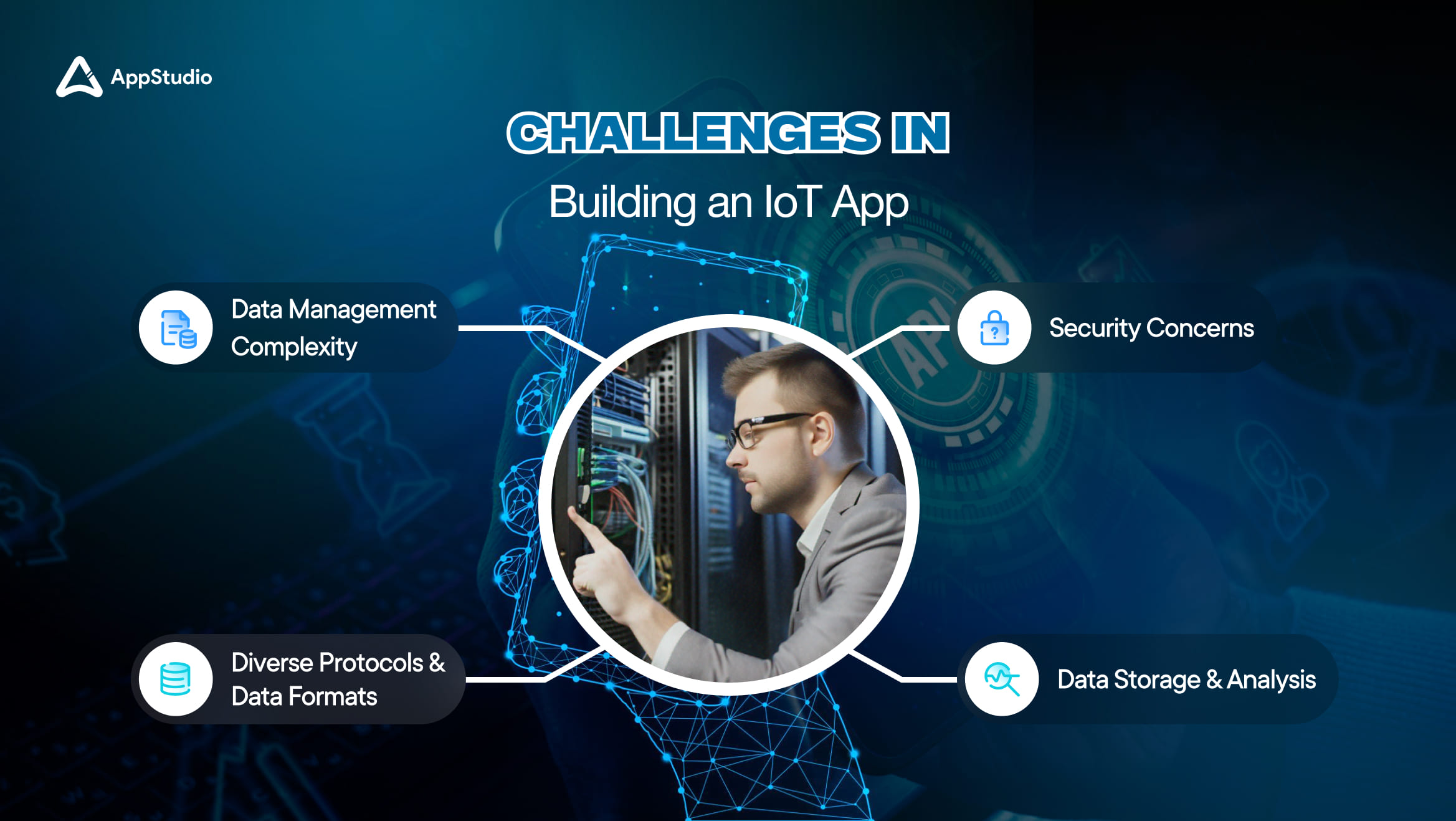
- Security Concerns: IoT devices are prone to security vulnerabilities, requiring developers to incorporate robust encryption techniques, secure communication protocols, and access control systems to protect sensitive data and prevent unauthorized access.
- Data Management Complexity: IoT apps generate vast amounts of data, which makes it challenging to manage and process. App developers must design applications that can scale to accommodate growing data volumes and users while maintaining reliability and performance.
- Diverse Protocols and Data Formats: IoT devices often use different communication protocols and data formats. Developers must ensure smooth communication between devices and apps, regardless of the underlying protocols used.
- Data Storage and Analysis: A significant challenge for IoT developers is the secure and scalable collection, analysis, and storage of large datasets. The system must be capable of handling the data influx without compromising security or performance.
- High Development Costs: IoT app development requires specialized hardware, software, and expertise, making it an expensive process. Developers must balance the development costs and the value the IoT solution delivers to the business.
Related reading: Your Absolute Guide To API Development: Tools, Types, and Best Practices
How AppStudio Supports Your IoT App Development
At AppStudio, we offer expert IoT app development services tailored to your business needs. Whether you’re building a new IoT app or enhancing an existing one, we specialize in creating scalable, secure solutions that ensure smooth device connectivity and handle large data volumes. Our team integrates real-time data synchronization and robust security features to protect user data. From design and development to deployment and maintenance, we provide comprehensive support to keep your app reliable and up-to-date.
Partner with AppStudio for mobile app development for IoT to drive innovation, improve efficiency, and enhance the user experience.
Conclusion
IoT app development is becoming crucial to business strategy, improving operational efficiency and enhancing customer engagement through real-time data and automation. As industries adopt connected devices, IoT applications offer practical solutions that drive growth and foster innovation. Investing in IoT will position your business for success in an increasingly connected world.
Partnering with IoT experts allows you to develop solutions that are precisely tailored to your specific needs, enhancing effectiveness and alignment with your goals. Embrace IoT technology to move closer to your business objectives with a solution crafted uniquely for you.
Frequently Asked Questions
IoT app development involves creating applications that allow users to interact with and control Internet of Things devices. These apps connect and manage multiple devices, gather real-time data, and enable actions based on that data. The development process includes both the mobile/web app design and integration with IoT hardware, sensors, and cloud services.
IoT apps provide real-time data and automation, which enhances operational efficiency, reduces downtime, and improves customer experiences. Businesses can use IoT apps to monitor systems, gather insights, and make data-driven decisions that optimize processes, lower costs, and drive innovation.
Yes, IoT apps are designed with security in mind. They incorporate encryption, secure data transmission protocols, and access control measures to protect user data. AppStudio ensures that all IoT apps follow industry best practices for security, minimizing the risk of data breaches or unauthorized access.
The cost of developing an IoT app varies based on the complexity, features, and the number of devices it integrates with. If you are looking for an expert to help you out, consult with our team to explore custom IoT app development solutions.
The timeline for building an IoT app depends on factors such as the app’s complexity, features, and the devices involved. Typically, IoT apps take anywhere from 2 to 6 months to develop. More intricate apps may take longer, especially if custom hardware integration is needed.
We have extensive experience in creating high-quality, scalable IoT apps. Our team leverages the latest technologies to ensure secure, reliable, and user-friendly solutions. We offer end-to-end support, from design and development to post-launch maintenance, ensuring your app remains up-to-date and effective.
